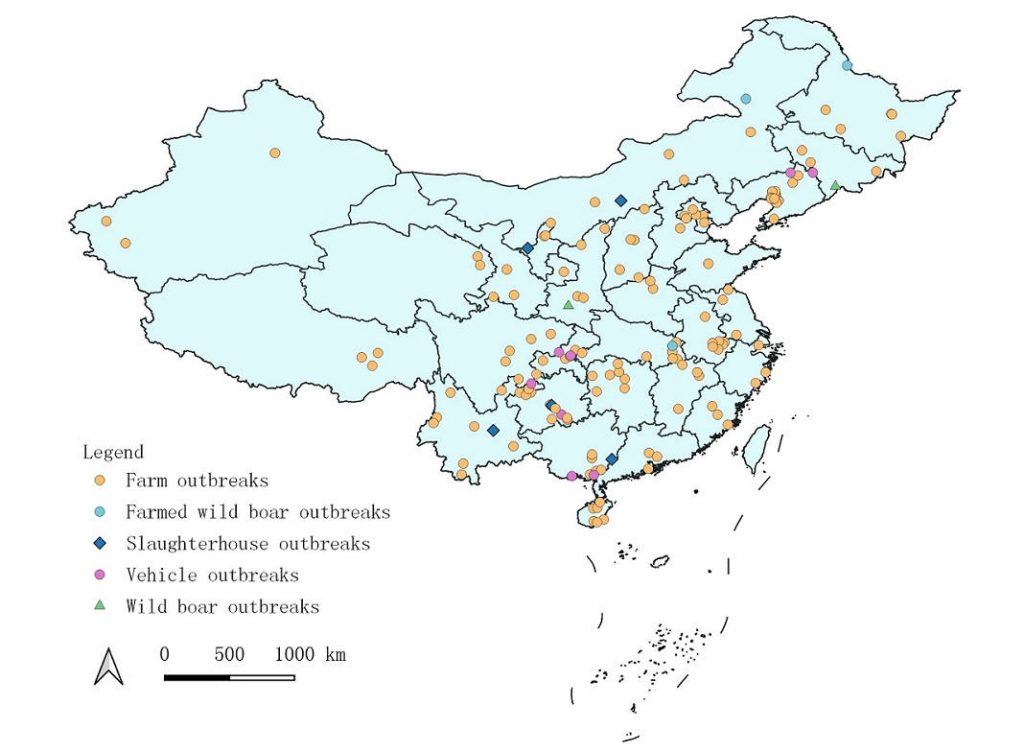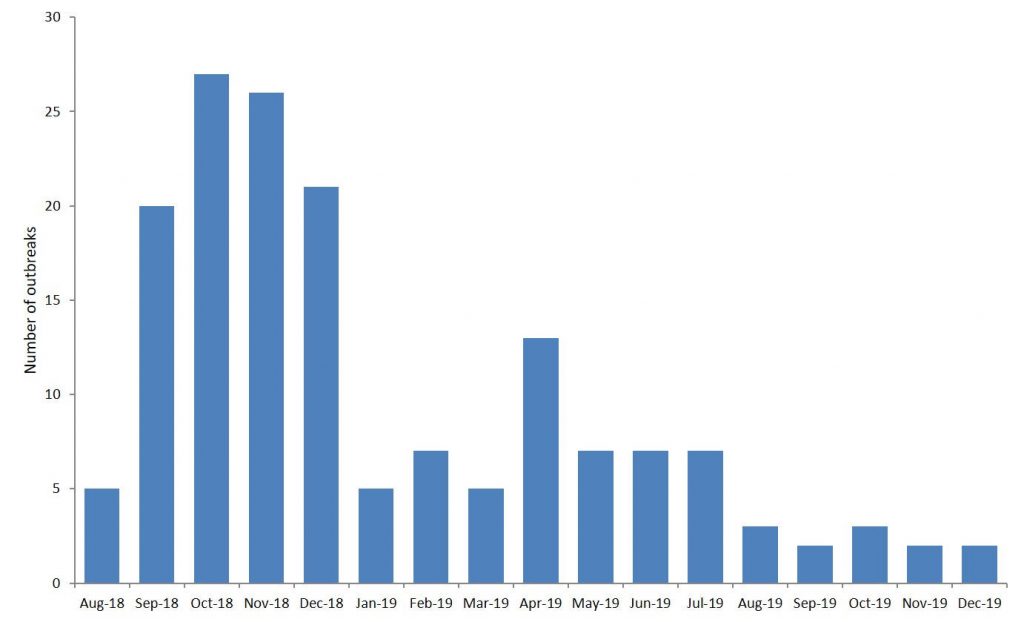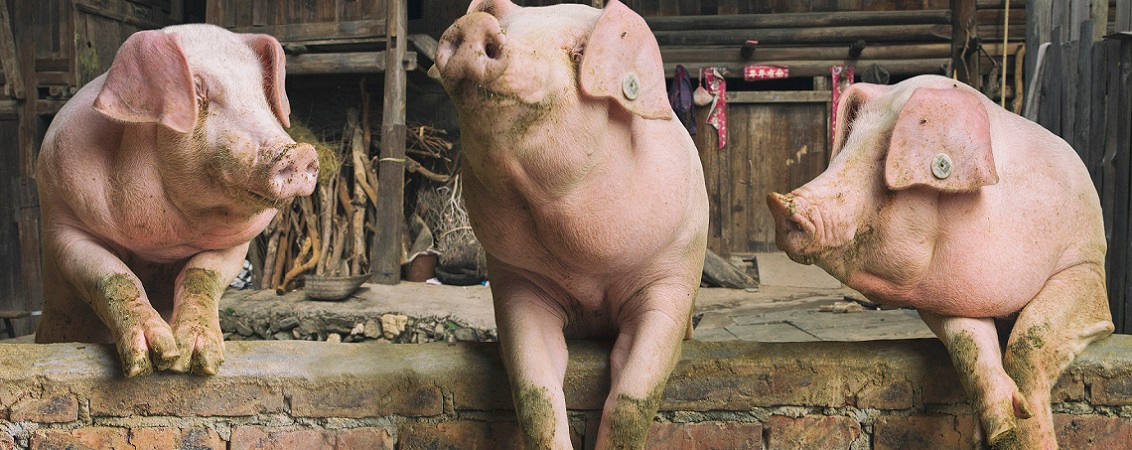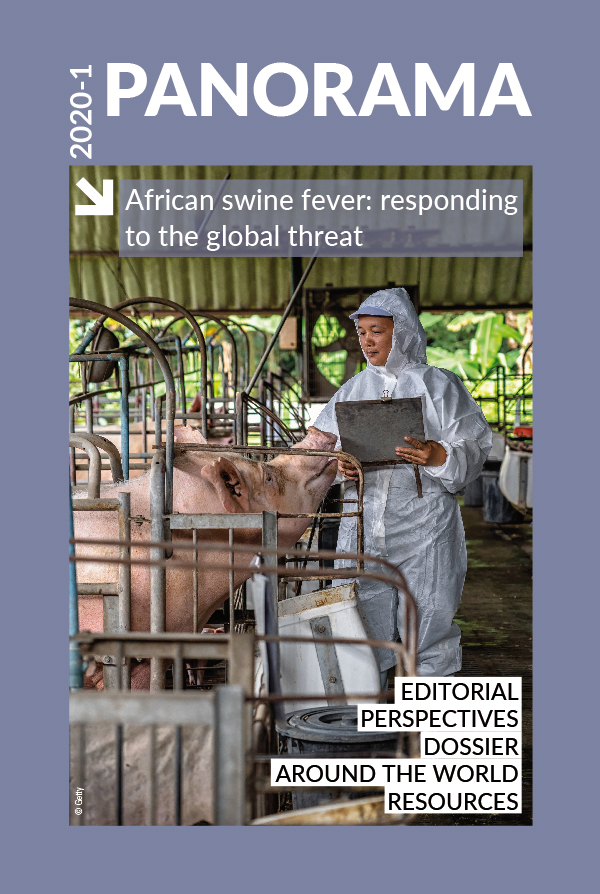Dossier Posted on 2020-07-06 15:41:14
Epidemic situation and practices for ASF in China
Keywords
Authors
Yang H.(1), Gao L.(1), Wang Y.(1)* & Huang B.(1)
(1) China Animal Health and Epidemiology Centre (CAHEC), Qingdao, People’s Republic of China.
* Corresponding author: wangyouming@cahec.cn.
The designations and denominations employed and the presentation of the material in this article do not imply the expression of any opinion whatsoever on the part of the OIE concerning the legal status of any country, territory, city or area or of its authorities, or concerning the delimitation of its frontiers and boundaries.
The views expressed in this article are solely the responsibility of the author(s). The mention of specific companies or products of manufacturers, whether or not these have been patented, does not imply that these have been endorsed or recommended by the OIE in preference to others of a similar nature that are not mentioned.
Transmission routes
An analysis of the hypothesised means of introduction for 148 outbreaks in farms and slaughterhouses indicates that the main transmission routes included contact through vehicles and personnel (42%), swill feeding (39%), and movement of infected pigs and risky pig products (19%). The first outbreak reported in 14 provinces was associated with swill feeding. In addition, nine outbreaks occurred in vehicles transporting pigs, and five outbreaks were reported in wild pigs.

Launch of targeted polices
Prevention and control policies were adjusted, based on the epidemic characteristics. These policies included ban on swill feeding, movement control, closing live pig markets, strengthening inspection at slaughterhouses, vehicle cleaning and disinfection, and improving farm-level biosecurity. According to a survey for the pig industry launched in November 2019, the overall implementation rate of prevention and control measures among respondents was 90%, and swill feeding almost disappeared. The awareness of prevention and control measures carried out by local governments, veterinary authorities and farmers has greatly improved over time. In addition, the proportion of positive samples collected from vehicles, slaughterhouses and markets has dramatically decreased. With the implementation of these measures, the severity of the epidemic has moderated (Fig. 2).

________________________________________
(1) The Xinjiang Production and Construction Corps is an administrative authority in the Xinjiang Uyghur Autonomous Region of China.
http://dx.doi.org/10.20506/bull.2020.1.3125










